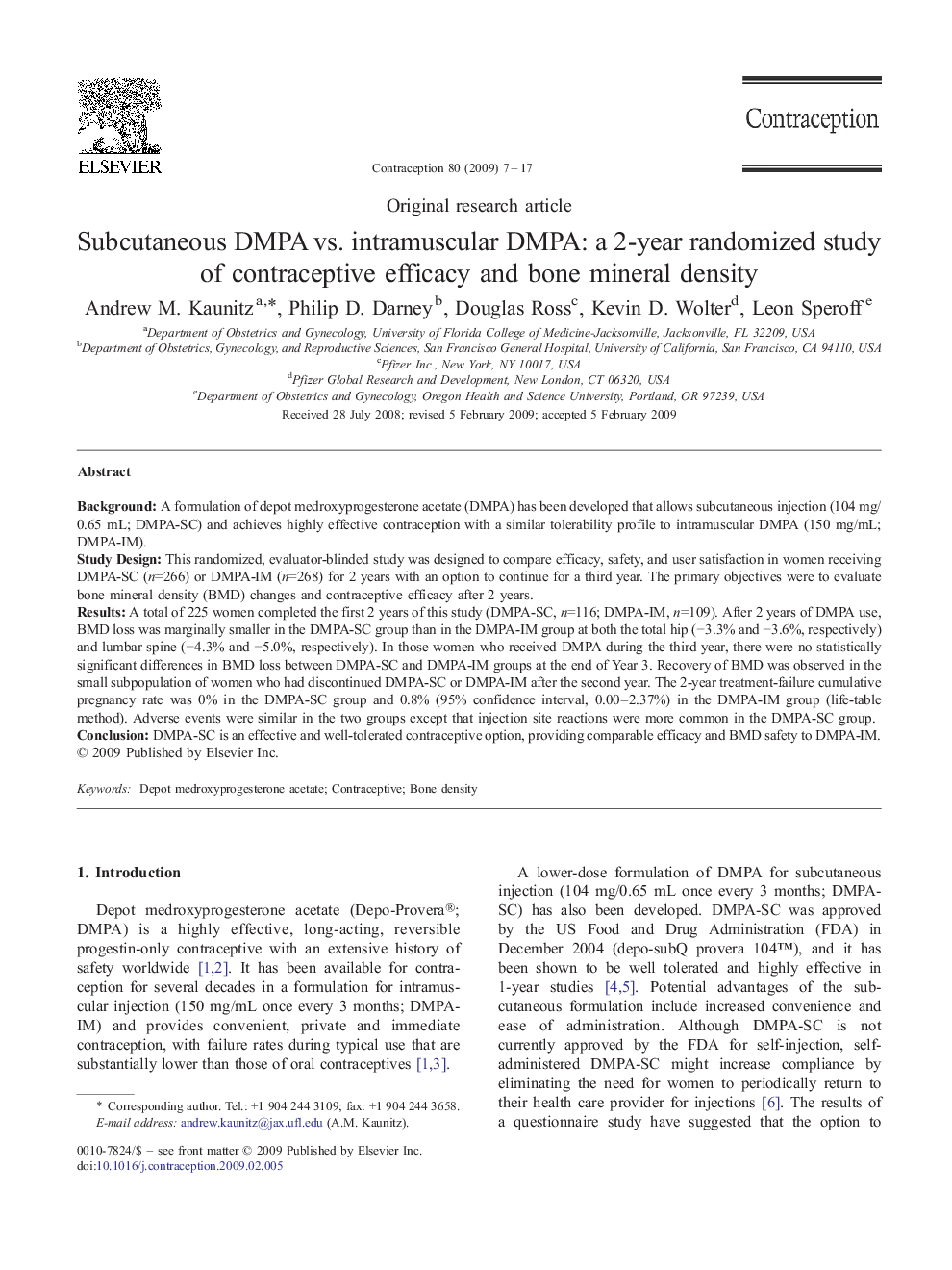| Article ID | Journal | Published Year | Pages | File Type |
|---|---|---|---|---|
| 3914482 | Contraception | 2009 | 11 Pages |
BackgroundA formulation of depot medroxyprogesterone acetate (DMPA) has been developed that allows subcutaneous injection (104 mg/0.65 mL; DMPA-SC) and achieves highly effective contraception with a similar tolerability profile to intramuscular DMPA (150 mg/mL; DMPA-IM).Study DesignThis randomized, evaluator-blinded study was designed to compare efficacy, safety, and user satisfaction in women receiving DMPA-SC (n=266) or DMPA-IM (n=268) for 2 years with an option to continue for a third year. The primary objectives were to evaluate bone mineral density (BMD) changes and contraceptive efficacy after 2 years.ResultsA total of 225 women completed the first 2 years of this study (DMPA-SC, n=116; DMPA-IM, n=109). After 2 years of DMPA use, BMD loss was marginally smaller in the DMPA-SC group than in the DMPA-IM group at both the total hip (−3.3% and −3.6%, respectively) and lumbar spine (−4.3% and −5.0%, respectively). In those women who received DMPA during the third year, there were no statistically significant differences in BMD loss between DMPA-SC and DMPA-IM groups at the end of Year 3. Recovery of BMD was observed in the small subpopulation of women who had discontinued DMPA-SC or DMPA-IM after the second year. The 2-year treatment-failure cumulative pregnancy rate was 0% in the DMPA-SC group and 0.8% (95% confidence interval, 0.00–2.37%) in the DMPA-IM group (life-table method). Adverse events were similar in the two groups except that injection site reactions were more common in the DMPA-SC group.ConclusionDMPA-SC is an effective and well-tolerated contraceptive option, providing comparable efficacy and BMD safety to DMPA-IM.
